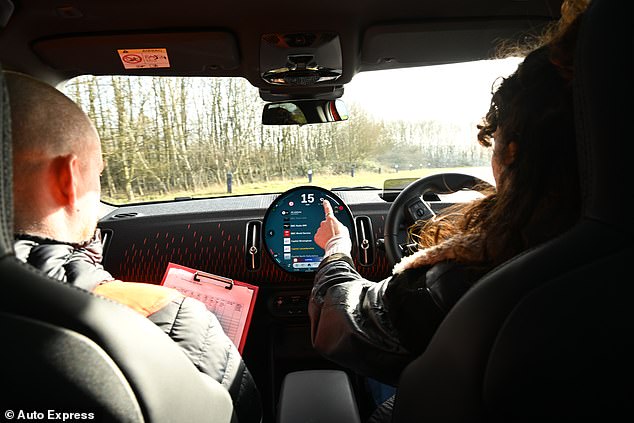Luxury Car Brands Face Scrutiny Over Distracting Touchscreen Systems
With growing concerns about the distraction caused by complex touchscreen systems in modern vehicles, a new study has named and shamed the car brands with the most difficult-to-use infotainment interfaces.

This evaluation comes as manufacturers are threatened with having their safety ratings downgraded if simple in-cabin functions require drivers to navigate multiple screen menus, instead of using physical buttons. With these new rules set to take effect next year, Auto Express conducted a comprehensive examination of the most complex infotainment systems in various car brands.
The test, that focused on how drivers interact with the systems while in motion, ranked the screens based on their potential to distract drivers. The results revealed that Skoda had the easiest to use system among the 10 mainstream brands tested.
The Test
Auto Express enlisted three drivers with varying levels of experience with touchscreen systems to complete five common tasks while driving around a closed test track that mimicked real-world road conditions. They were instructed to maintain a 20mph speed limit while navigating junctions and roundabouts. The drivers were tasked with making five simple adjustments within the cabin:
- Turning off Lane Keep Assist
- Activating navigation and selecting ‘home’
- Increasing the cabin temperature by two degrees
- Activating the heated seats
- Selecting radio and adjusting the channel to BBC Radio 4.
Each vehicle’s system was assessed based on the time it took users to complete these adjustments, along with a timed lap around the closed route to measure how much drivers slowed down due to distractions from the infotainment system adjustments.

The average time required to successfully complete setting adjustments in the Skoda Superb – equipped with the Volkswagen Group’s latest navigation system – was a mere 4.8 seconds. Skoda did best in turning off the lane keep assistance feature and setting a sat-nav destination, and was among the top performers for all five adjustments.
The Worst Performer
At the opposite end of the spectrum was Genesis, the luxury arm of Hyundai. The ‘ccIC’ infotainment system in its GV60 SUV was ranked lowest of all ten touchscreens tested. It took drivers an average of 13.6 seconds to complete the same five tasks — almost three times longer than with the Skoda system.
The worst individual result was turning off lane keep assist, which took 22.6 seconds –nearly four times longer than in the top-ranked Skoda Superb (6.6 seconds). It took the test team almost 20 seconds on average when changing the sat-nav destination and tuning the radio, indicating that drivers had to take their eyes off the road for an extended period to complete these everyday tasks.

As a result, the average lap time was also 36 seconds slower than the drivers’ target time. This was among the largest discrepancies across all the brands examined.

Paul Barker, editor at Auto Express said, “By combining myriad manual controls into a single digital system perched atop your dashboard, car makers are able to reduce time and money spent on design, development, manufacture, and assembly, making significant savings across the board.”
“However, as touchscreens become more complex, they are increasingly distracting. Glitches are also common, with screens occasionally freezing or failing to respond promptly, causing drivers to look away from the road longer than necessary.”

A Genesis spokesperson said, “While the test focused on accessing features and making changes through the infotainment screen, there are also shortcut direct access buttons for these most-used features on the steering wheel and on the central dash to do exactly the same thing.”

Auto Express Infotainment System Test Results:
Source: Auto Express
Consumer Preferences and Future Changes
The test results indicate that the race to simplify car interiors and reduce the number of physical buttons may have gone too far. A poll conducted by What Car? last year found that nine in ten motorists want manufacturers to return to traditional button and switch controls. Another poll found that 60% of car buyers would be deterred from purchasing a model that heavily relies on touchscreen controls.

Volkswagen has admitted to the criticism, and confirmed it would bring back physical buttons in new models, starting with the ID.2all in 2026.

Independent car safety body Euro NCAP will downgrade the safety ratings of vehicles from January 1, 2026, that do not include physical buttons for controlling key functions such as indicators, hazard lights, the horn, windscreen wipers, and the SOS function.



